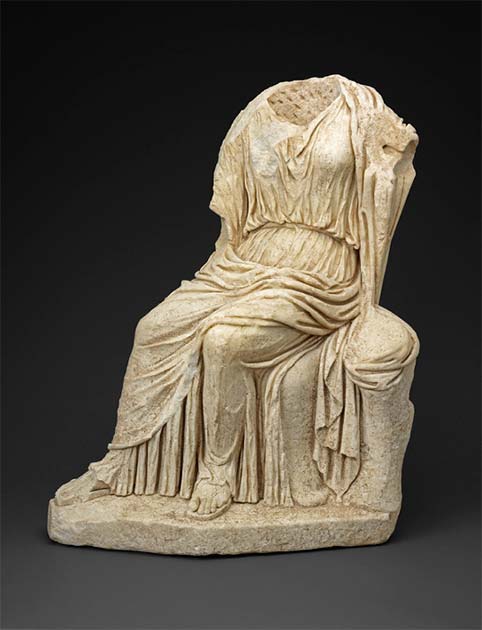
Romans Cleverly Used Interchangeable Heads on Their Statues
Museums are filled with the captivating spectacle of bodiless heads and headless bodies dating back to Roman times. “Headless, these statues invoke a sense of mystery and fragmentation, allowing us to glimpse into the past while reminding us of the gaps in our understanding,” described Diana Kleiner in her book Roman Sculpture. But why is it that Roman statues are so often found without their heads (and vice versa)?
The prevalence of headless Roman statues is rooted in the complex history and cultural context of ancient Rome. One of the most frequently touted explanations is the deliberate defacement of statues. Within a culture where statues symbolized state power, the act of being forgotten represented the ultimate penalty. Defacing or decapitating statues served to exert control and erase the memory of individuals, especially during times of regime change. Famously, the Kushites decapitated a statue of Emperor Augustus and put it under the temple steps in Meroë so as to symbolically trample on it.
Centuries of exposure, neglect, erosion and warfare have taken their toll on statues dating back thousands of years, leading to the loss of more fragile components, including heads, noses and limbs. Due to fragmented archaeological excavations, with bodies and heads found independently and years apart, the abundance of missing heads in exhibitions worldwide is not surprising. There is even evidence that smugglers have divorced heads from bodies to have two sellable artifacts.

This headless marble Roman statue of a seated woman, dating back to 2nd century Rome, was designed to accommodate interchangeable heads. It is now display at the Art Institute of Chicago. (Public domain)
What may come as a surprise is that the ever-practical Romans ingeniously designed some statues with interchangeable heads to avoid the cost of creating new ones when a fresh ruler assumed power. The body portion of these statues was versatile, allowing them to be repurposed over time. For instance, the clothing on the second-century Statue of a Seated Woman at the Art Institute of Chicago could have been worn by Empress Faustina the Elder or the goddess Juno.
While matching ancient Roman sculptural bodies with their original heads is a challenging task, occasionally reports emerge of exciting reunions between long-separated heads and bodies. In one example, the 2,000-year-old marble Statue of a Draped Woman at the Getty in Los Angeles was reunited with its missing head in 2016.
It was only a matter of time before the headless bronze statue of a Roman emperor (possibly Septimius Severus, ca. 225 AD) was seized from the #MetMuseum. Today, time ran out. It was looted from Bubon, an archaeological site in southwest Turkey, in the 1960s. #looting 1/ pic.twitter.com/9YxhhRJ3ky
— Chapps (@chapps) April 1, 2023
However, these cases are inordinately complex. The New York Times reported that the bronze head of Roman emperor Septimus Severus, housed at the Glyptoteck Museum in Denmark, was found to belong to a Roman statue on display at the MET. Attempts at uniting them were thwarted, however, when Turkish authorities proved the body had been looted in Turkey in the 1960s. Unsurprisingly, Danish curators have now questioned the connection between the head and body, possibly to avoid repatriation.
Top image: Roman sculpture showing detachable head. Source: giorgio/ Adobe Stock















